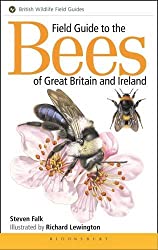Short-fringed Mining Bee - Andrena dorsata
The short-fringed mining bee - Andrena dorsata, is a lovely bee to look out for from spring onwards, through to autumn, since this bee species is bivoltine, having two generations (nest cycles) per year.
About The Short-fringed Mining Bee - Andrena dorsata
This bee is typically a little smaller than a honey bee, measuring less than a centimetre in length (up to 8mm for females, with males a little smaller).
Females have reddish ginger hair on the thorax (upper body). The dark abdomen features distinctive pale hairs around the edges, although these fringes of hair don't meet in the middle to give an appearance of full 'stripes'.
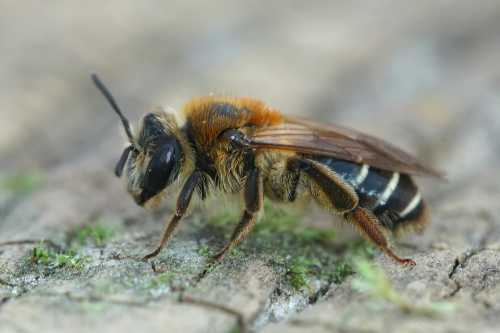 Female short-fringed mining bee, Andrena dorsata
Female short-fringed mining bee, Andrena dorsata Males are more slender than females, with longer, pale hairs on the face.
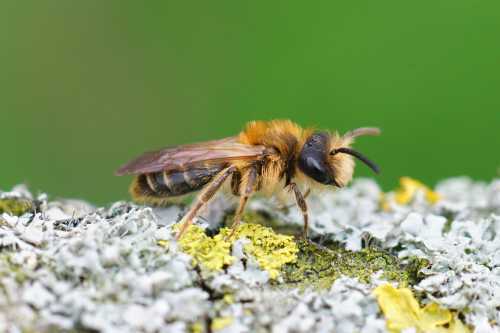 Short-fringed mining bee - Andrena dorsata - male
Short-fringed mining bee - Andrena dorsata - maleIn Field Guide to Bees Of Great Britain And Ireland, Falk1 notes that Andrena species have "more extensive pollen-collecting apparatus than most other bees".
This includes not only most parts of the hind leg, but also hairs arranged in a type of pollen basket on the propodeum, which Falk describes as the rear section of the thorax.
Below is a lovely image from an old journal from the year 1899: Cambridge Natural History (V. 6).
It compares different hairs taken from the bodies of bees and specifically includes a hair from the thorax of Andrena dorsata - the plumose hair labelled 'D'. It appears perfectly designed to trap pollen - see my page about bees and sticky hair.
However, bees of different species may have a variety of hair types on their bodies (simple, spiral or plumose), and for example, plumose hairs have been found to occur on male bees and parasitic bee species that do not carry pollen2.
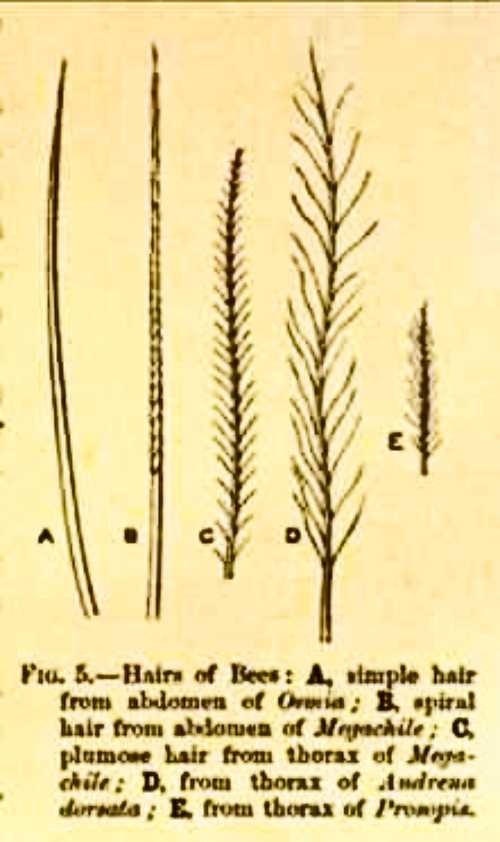 Comparison of hairs from different bee species: a simple hair, spiral hair and plumose hairs, including a plumose hair from the thorax of Andrena dorsata.
Comparison of hairs from different bee species: a simple hair, spiral hair and plumose hairs, including a plumose hair from the thorax of Andrena dorsata.Short-fringed mining bees belong in the Andrena genus, and are part of the Andrenidae bee family.
As with all other members of the Andrenidae, this bee species belongs in the short-tongued category.
Habitat and foraging preferences
Brownfield sites, coastal and heathlands as well as gardens may provide foraging and nesting opportunities for Andrena dorsata.
Look out for the first generation of short-fringed mining bees on spring flowering plants and shrubs, including willows, gorse and dandelions.
Later, as the next generation emerges, look to brambles, ragworts, daisies, thistles and heathers.
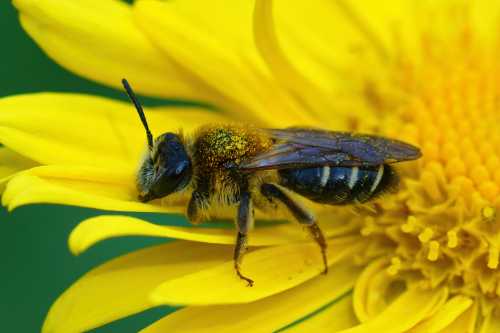 Short-fringed mining bee female
Short-fringed mining bee femaleNesting
This beautiful mining bee likes to create its burrows in light soils.
Mining bees...
- The Ashy Mining Bee - Andrena cineraria Identification, photos, habitat and nesting habits, parasites and flowers visited by this lovely bee.
- Painted mining bee - Andrena fucata - A medium-sized mining bee, with females around 9mm long, and males a little smaller. They are univoltine.
- The Chocolate Mining Bee - Andrena carantonica/scotica Images of 2 Chocolate mining bees mating, plus their habitats, nesting and foraging preferences.
- Grey-patched mining bee - Andrena nitida Images and description.
- Orange-tailed Mining Bee - Andrena haemorrhoa About the Orange-tailed Mining Bee: photos, habitat, foraging habits. Look out for the bright orangey hairs on the tip of the tail.
References
1. Field Guide to Bees Of Great Britain And Ireland by Steven Falk.
2. Harmer, S. F. (Sidney Frederic), Shipley, A. E. (Arthur Everett), Sir, The Cambridge Natural History, 1899.
